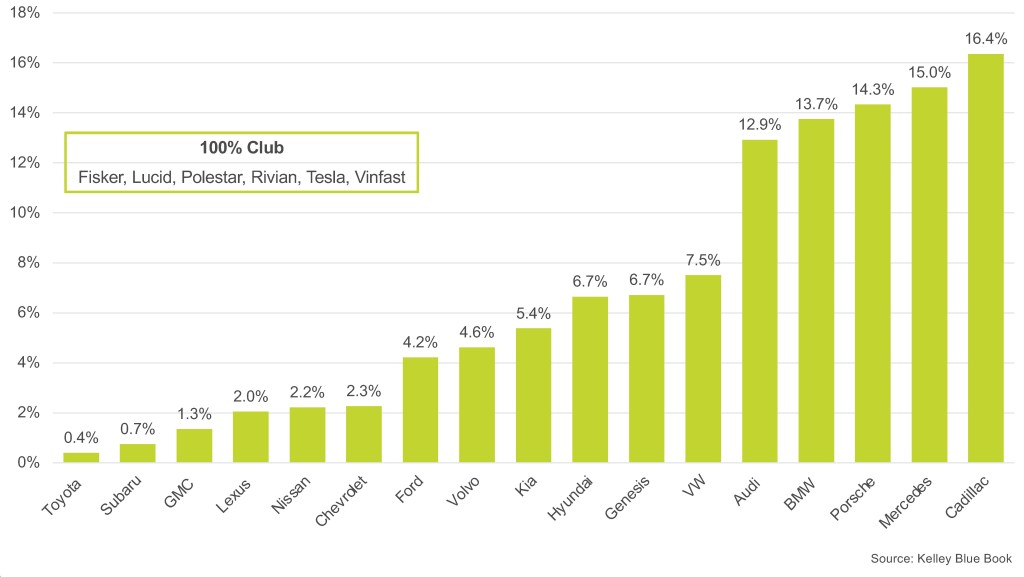A Kansas businessman who was indicted Monday on charges connected to altering vehicle odometers is the latest case of odometer fraud in the United States, a crime that costs American car buyers more than $1 billion annually, according to federal authorities.
Adam Newbrey, 31, of Derby, Kansas, was charged with 27 counts of criminal misconduct, including odometer tampering, aggravated identity theft, and mail fraud, among other charges, the U.S. Attorney’s Office for the District of Kansas said in a news release. According to prosecutors, he allegedly purchased used vehicles in Kansas and Oklahoma, and altered the odometers in 2020 and 2021.
Newbrey then used fraudulent documents to obtain vehicle titles from the Kansas Department of Revenue that reflected the falsified odometer readings, prosecutors claim. He is also accused of using the titles with the misrepresented mileage to defraud car buyers.
According to court documents, Newbrey operated three used car dealerships in Wichita: iDeal Motors, Midwest Wholesale, and Prestige Motors. In 2022, iDeal Motors was banned from legally selling cars in Kansas and was fined more than $159,000 following an investigation into consumer complaints about the dealership, KWCH reported.
Odometer fraud across the country is rising each year, according to data firm Carfax. The National Highway Traffic Safety Administration estimates that more than 450,000 vehicles are sold each year with false odometer readings causing consumers to lose over $1 billion annually.
Digital odometers make rollback scams easier
There is a misconception that odometer fraud has declined with digital odometers, according to Carfax research. Recent data suggests that more than 2.1 million vehicles were identified with rolled-back odometers in 2023, a 7% increase from the previous year and up 14% since 2021.
Before modern vehicles, odometers were rolled back manually on a mechanical instrument. But “odometers have since become digital, with the last round of mechanical odometers hitting the road in the early 2000s,” according to Carfax. Now, digital odometers can be rolled-back by removing a car’s circuit board or using equipment that fastens into the vehicle’s electronic circuit.
“Odometer fraud didn’t go away with the introduction of digital odometers,” Patrick Olsen, editor-in-chief at Carfax, said in a statement last December. “We’re still seeing the number of vehicles on the road with a rolled-back odometer rise year-over-year. It takes con artists only a matter of minutes to wipe thousands and thousands of miles off a vehicle’s odometer.”
Typically, higher mileage leads to depreciation in the value of vehicles. Fraudsters tamper with vehicle odometers to rollback the number of miles, deceiving buyers into thinking the car has a lower mileage and a higher purchase price.
As of February, the average used-vehicle listing price was $25,328 — down 4% from a year earlier — according to Cox Automotive. “Though used-vehicle prices are lower now versus 2022 and 2023, they remain much higher than in 2019,” Cox Automotive said in an article.
According to Carfax data, consumers lose an average of $4,000 yearly in rollback scams, which doesn’t include unexpected maintenance and repair costs.
California, Texas, and New York are among states with most rolled-back odometers
Last year, Carfax research found 10 states nationwide with the most cars with rolled-back odometers. Nine of the states saw a rise in rollback scams, while only one remained unchanged:
- California: 469,000, up 7.2%
- Texas: 277,000, up 12.8%
- New York: 100,000, up 9.0%
- Florida: 85,400, up 1.4%
- Illinois: 79,000, up 7.6%
- Pennsylvania: 69,600, up 2.1%
- Georgia: 67,600, up 4.0%
- Arizona: 57,000, up 4.8%
- Virginia: 56,000, unchanged
- North Carolina: 49,000, up 8.2%
How to protect yourself from rollback scams
Industry experts say odometer rollback fraud can easily be avoided. Experts recommend examining the vehicle and asking the seller questions about the car’s condition, including the odometer reading.
“If the car shows low mileage but has a lot of wear on the seats, pedals, tires, and steering wheel, that may be a sign that something is amiss,” according to Capital One Auto Navigator.
Capital One and Carfax also recommend the following tips to avoid rollback scams:
- Check the car’s history report. Copies can be obtained from websites such as Carfax and AutoCheck.
- Review vehicle documents, including the vehicle’s original title, which will show the car’s mileage at the time the title was created. Maintenance and repair records can also show mileage numbers.
- Take the car to a mechanic to inspect its condition before buying
Anyone who suspects a seller committed fraud by rolling back the car’s odometer is advised to contact a state enforcement agency. Agencies that investigate odometer rollback cases differ from state to state, according to Carfax.
Article originally published by USA Today https://www.usatoday.com/story/news/nation/2024/03/18/car-dealer-indicted-rollback-odometer-fraud/73023396007/












